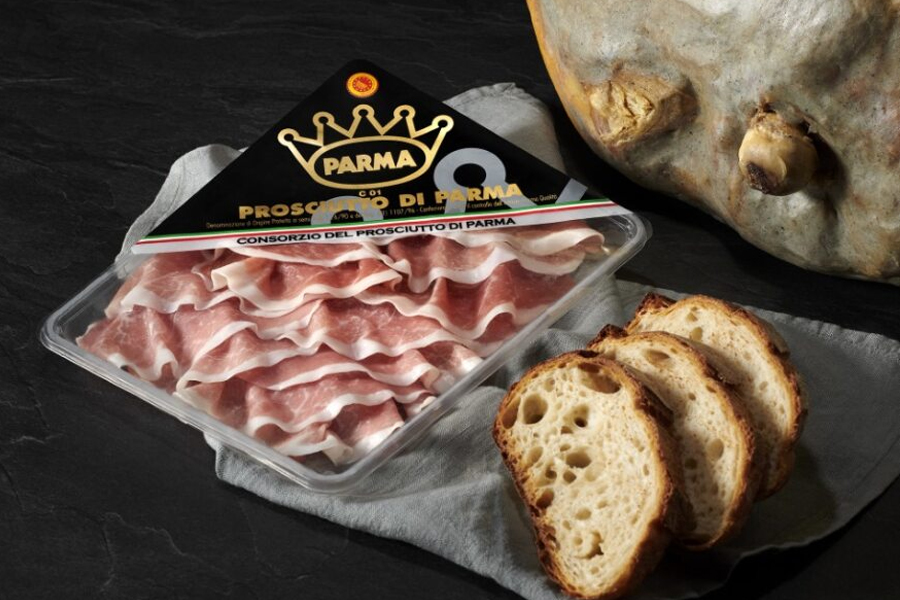Prosciutto di Parma has carried out research to identify more sustainable alternatives to the traditional packaging of the pre-sliced product.
Driven by consumption habits that have strengthened considerably during the pandemic, sales of Parma Ham packs have performed exceptionally well in recent years. In 2022, more than 90 million were sold in Italy and foreign countries, including the UK – a figure well above that of 2019. But the success of the pre-sliced product in packs now poses a new challenge: reducing the environmental impact of packaging.
“Parma Ham has always played a fundamental role for the social and economic resilience of the province of Parma, and this must include the environmental aspect,” said Alessandro Utini, president of the Consortium.
“We are united by an inseparable bond with our territory of origin; our task must be to invest in research and coordinate the commitment and efforts of the companies in the sector, to reduce the environmental impact of our production activities.”
Focused on strengthening the environmental sustainability and circular economy of Parma Ham, the Consortium researched in collaboration with the Experimental Station for the Parma Food Conservation Industry (SSICA), to test alternative and more sustainable materials than those traditionally used for packaging pre-sliced ham.
Shelf-life tests were carried out with packaging from several sources and with different recycling methods, such as paper, recyclable PET and compostable bioplastics.
The use of these materials stems from the desire to guarantee a supply of raw materials of renewable origin that are sustainable, and from the need to foster every possible form of reuse or recovery of waste after consumption. Materials were combined in different types of packaging and used for trials in a protective atmosphere, with Parma Hams across a producers and maturation periods, from 16 to 20 months.
“The packs underwent chemical-physical, sensory and microbiological analyses with extremely significant results. We highlight the fact that packs consisting of paper tray and paper top (with or without transparent window), yielded even better preservation performance than traditional materials, also in terms of durability. Paper is therefore an excellent solution, thanks to its recyclability, ease of reuse and origin from a renewable source,” said Utini.
But other tested materials also excelled. The PET tray, with a shorter shelf-life than paper, is suitable for sale in transparent packaging, while the compostable bioplastic-based packages guarantee a shorter shelf-life, compatible with the ‘take away’ sales formula.
“The research has successfully identified valid alternatives to traditional packaging and provided companies with important tools to support their already substantial commitment to sustainability. The transition to alternative and more sustainable materials, even in a macro-economic and production context that will require commitment and time to be implemented, is not only desirable, but finally possible,” Utini concluded.


